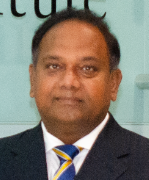Human Post-Mortem Tissue Conatus
Why do certain cells seek survival as the body dies? What guides this process?
Investigators from the McGowan Institute for Regenerative Medicine at the University of Pittsburgh are exploring what happens to cells in the onset of human death and why certain tissues seek survival, even as the body dies. Faculty from the IU College of Arts + Sciences, with expertise in philosophy and bioethics, are collaborating with McGowan investigators, to study the biophysical, ethical and philosophical questions that will direct their efforts in discovery.
Regenerative medicine, a promising new field of medicine that explores reprogramming or regenerating human cells and tissues, is a fitting approach to pursue post-mortem tissue conatus research–or research after human death. Combined with tissue engineering research, investigators are exploring how to improve or restore damaged tissues and other parts of the body, and their capacity to survive after death.
In 2021, McGowan received a 3-year grant from the John Templeton Foundation on the topic of human post-mortem tissue conatus. Led by Chandan K. Sen, PhD, director of the McGowan Institute for Regenerative Medicine, research findings could help inform future biomedical research that recognizes death as a biological variable as well as a pathway to future clinical care that supports enhanced tissue survival, that may have implications for transplant recipients, forensic science and other clinical areas.
Events Update
The Indiana Center for Regenerative Medicine and Engineering hosted a workshop outside Washington, D.C. in November 2022, where the foremost experts in human post-mortem conatus gathered to share updates on their research. Also in attendance were representatives from the National Institutes of Health (NIH).
A second event is planned in 2023 in Indianapolis, where research updates will be provided.
Indianapolis event, date and meeting location TBA

Exploring cellular and tissue death after human death at Pitt
For centuries, scientists, psychologists, philosophers, and ethicists alike have been fascinated by the concept of life after death and sought to better understand what happens to human tissues, composed of an ever-changing flux of trillions of cells, after human death. Today, a new generation of thought leaders remain captivated and want to better understand the biological metamorphosis and are asking whether certain cells live on after human death.
Study of cell death in cancer has helped inform investigators about how cells proliferate and die as well as how they can be disguised to prevent further disease, and they continue to offer more clues to the nature of cells.
In recent years, the study, “Tracing the dynamics of gene transcripts after organismal death,” published in Open Biology in 2017, investigators found unique dynamics of specific genes which were upregulated and only shut off nearly 96 hours after death in zebra fish and mice. They surmised through “natural selection and self-organizing processes,” they underwent a “thermodynamically-driven process of spontaneous disintegration through complex pathways,” which consisted of an increase of specific gene transcripts and putative feedback loops.
In 2021, investigators from the University of Illinois Chicago (UIC) found gene expression in fresh brain tissue to increase after death in inflammatory cells called glial cells. Results of their study were published in Scientific Reports and showed these “zombie genes” grew arm-like appendages for several hours after clinical death and would clean up after neurological events such as stroke or oxygen deprivation.
Scientists now know which cells and genes remain stable, which disintegrate, and which proliferate. Yet, there remains unanswered questions. Is there an intrinsic urge for survival at the human body level or at the individual cellular level? Is there life after the heart and brain stop? The Indiana Center for Regenerative Medicine and Engineering at Indiana University seeks answers.